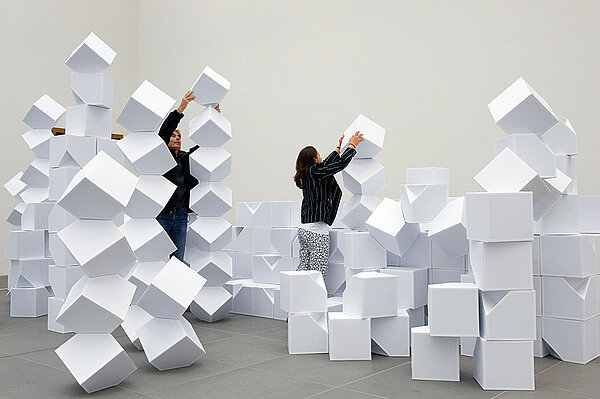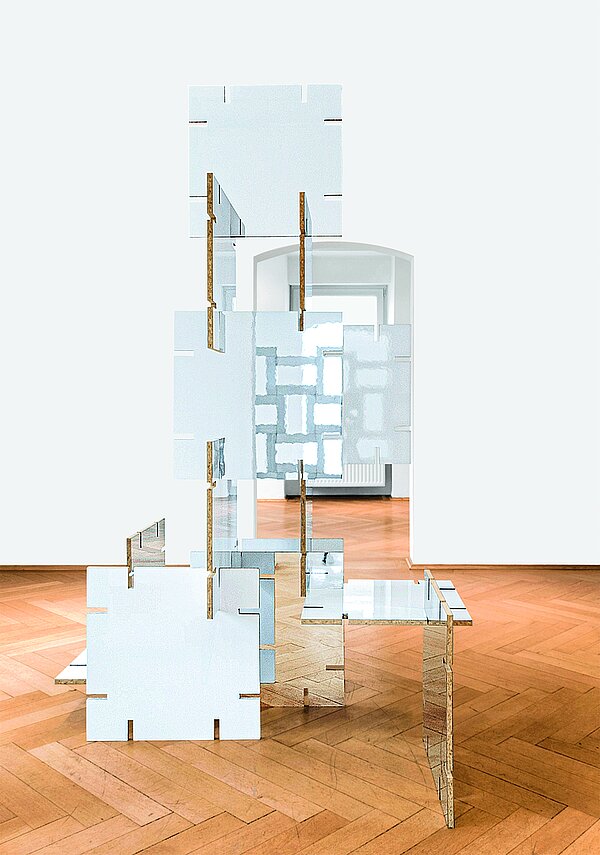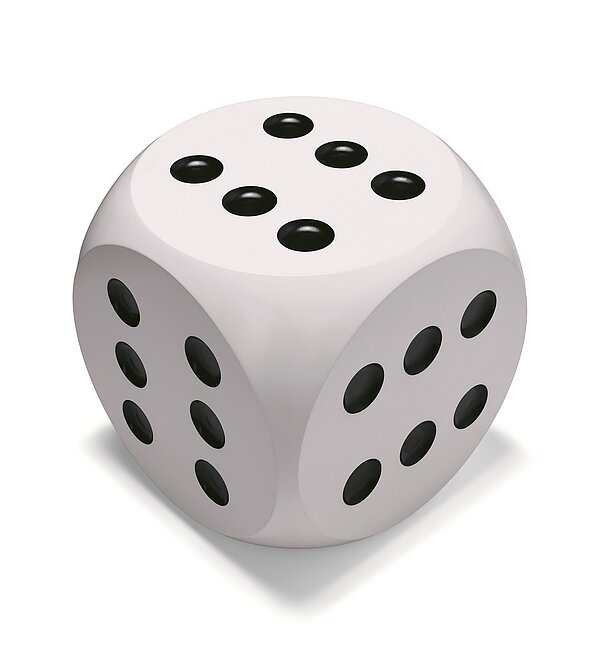When Play Makes Art
22 May until 18 September 2022

This exhibition presents works from the interface between art and play, and looks at both the design aspects as well as the creativity that lies in fun and games. Picking up, restacking, rearranging? The things that normally one really shouldn’t do in a museum are expressly allowed here – at least with a number of the exhibits. These appeal to the visitors’ desire to take an active part and shape the works, because they are meant to be touched, used and altered.
For instance, the constructive potential of Jeppe Hein’s installation Intervention Impact (2004) comes to fruition when the audience takes the white cardboard cubes as oversize building blocks and constantly re-orders them.
Strategic, playful hands-on action and physical involvement are as central to the concept behind Play (2016), a geometrically painted ping pong table by the artist duo Oliver-Selim Boualam & Lukas Marstaller (BNAG), as they are to Jacob Dahlgren’s immersive ribbon cube, The Wonderful World of Abstraction (2015), in which visitors can envelop and conceal themselves.
Apart from the works with highly physical components, the exhibition also contains pieces that have not been designed for viewer interaction. Familiar games are given a new twist and transformed into art pieces which, aside from aesthetic considerations, examine cultural and sociological phenomena. While in Ingeborg Lüscher’s video, Fusion (1999/2001), football becomes a parable for a male dominated manager culture, Gerold Tagwerker’s partly mirrored work construct_unfinished (2007/08), which is based on an outsize stacking game, aims at the visual blending of the work with the surrounding space.

Jessica Centner, on the other hand, combines in Texas ist der Grund [Texas is the Reason] from 2005/06 Lego bricks with identically coloured pedestals to create minimalist monochrome steles. The play material employed here is no more intended for active use than the dice that confront the viewer in Timm Ulrichs‘s Glückswürfel [Lucky Dice] from 1965/2019: with six pips on every face, they above all invite us to perform a mental experiment, to “grasp” a guaranteed windfall and the absurdity of a totally predictable outcome.

Participants (selection):
Oliver-Selim Boualam & Lukas Marstaller (BNAG), Jessica Centner, Jacob Dahlgren, Jeppe Hein, Ingeborg Lüscher, Manfred Luther, Antonella Mazzoni, Anton Stankowski, Gerold Tagwerker, Timm Ulrichs

